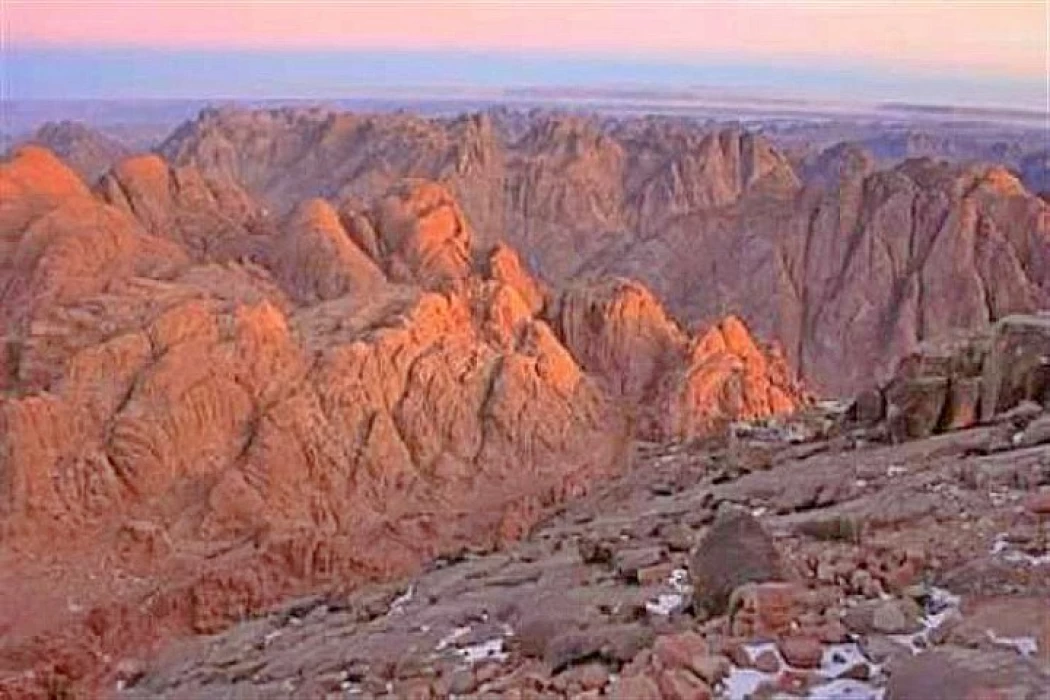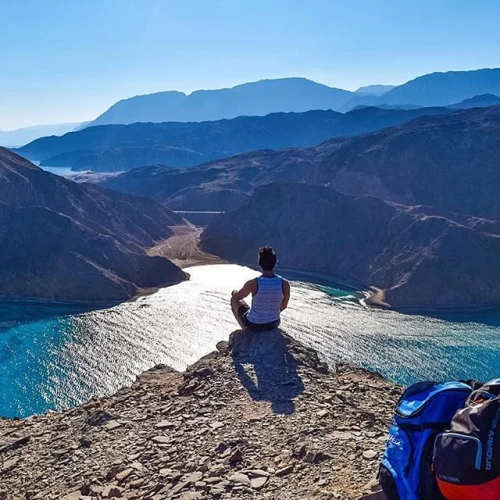
History of Moses Mount in Sinai | Mountain of Moses
Location
The location of Mount Horeb is disputed. Jewish and Christian scholars have offered different opinions about his whereabouts since Biblical times. Elijah is described in 1 Kings 19:1-21 as traveling to Horeb, in a manner that suggests his situation was familiar when the passage was written, but there are no biblical references that date later in time. In addition, the passage outlines a cave large enough to settle in. Christian traditions consider Mount Horeb to be the willow peak, located next to the monastery of St. Catherine.
A mountain located in the South Sinai governorate of Egypt; its height is 2285 meters above sea level. It was named Mount Moses after the Prophet Moses, who was spoken to by his Lord on this mountain and received the Ten Commandments according to the religions of Judaism, Christianity, and Islam.
Mountain range, especially during the sunrise and sunset periods, and it is located near Mount Catherine (Mount Tor Sinai), where there is the monastery of St. Catherine, and the mountain is surrounded by a group of peaks of the South Sinai mountains.
Events
According to Exodus 3:5, the land of the mountain was considered sacred, and God ordered Moses to take off his shoes. Exodus 17:6 describes the incident of the Israelites being in the wilderness without water.
The only other use of the name in Exodus is found in Chapter 33, where Horeb is the place where the Israelites stripped their ornaments. This passage (Exodus 33:16) indicates that Horeb was the place from which the Israelites set out towards Canaan when they resumed the Exodus journey. In Deuteronomy, Horeb is mentioned several times in the account of the wandering of the Israelites in the wilderness. Moses mentions in Deuteronomy 1:6 that God said to the Israelites in Horeb, "You have dwelt a long time in this mountain: turn and set out on your journey," asserting that Horeb was the place from which they set off towards Canaan.
In Deuteronomy, Horeb is mentioned several times in the account of the wandering of the Israelites in the wilderness. Moses mentions in Deuteronomy 1:6 that God said to the Israelites in Horeb, "You have dwelt a long time in this mountain: turn and set out on your journey," asserting that Horeb was the place from which they set off towards Canaan.
Deuteronomy 5: 2 ("The Lord our God made a covenant with us in Horeb") creates the feeling that the current generation that was speaking Moses was present on Mount Horeb when Moses came down with the commandments, although " the individuals who were present have all perished except Moses, Joshua and Caleb.
The nation survived, and as it was with the nation as an organic whole that the covenant was made. It may be with propriety that he has been with those who addressed Moses at this time, as far as the nation is formed.»
According to the Documentary Hypothesis, the name Sinai was used in the Torah only by the Jahwist and the Priestly source, while Horeb was used only by the Elohim and Deuteronomy.
Judaism / Christianity
It is not open to the public. The church is surrounded by a rock, which is considered the source of the biblical stone tablets. Also at the top is the" grotto of Moses", where it is said that Moses waited to receive the Ten Commandments.
The location of Mount Moses on the Egyptian Sinai Peninsula This blessed Mountain is also considered one of the best mountains of the Earth by Allah, and it has been mentioned in the Qur'an as Sinai was mentioned because it is located there, Allah Almighty has said about it ﴿ and developed Sinin and this faithful country. The longest and deepest route, the beshit railway, takes about 2.5 hours on foot, although camels can be used. The steepest and most direct route (Sekt Sedna Musa) is the 3750th highest "repentance step" in the narrow valley behind the monastery.















